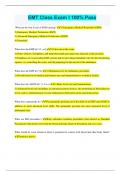Samenvatting
Summary European taxation
Samenvatting van alle lessen, powerpoint samengezet met notities: alles wat je nodig hebt om te slagen voor het examen (enkel deze samenvatting geleerd en mooi cijfer behaald) Summary of all lessons, powerpoint put together with notes: everything you need to pass the exam (only learned this summ...
[Meer zien]












